Destroyer Looks Radically Different After Electronic Warfare Upgrade
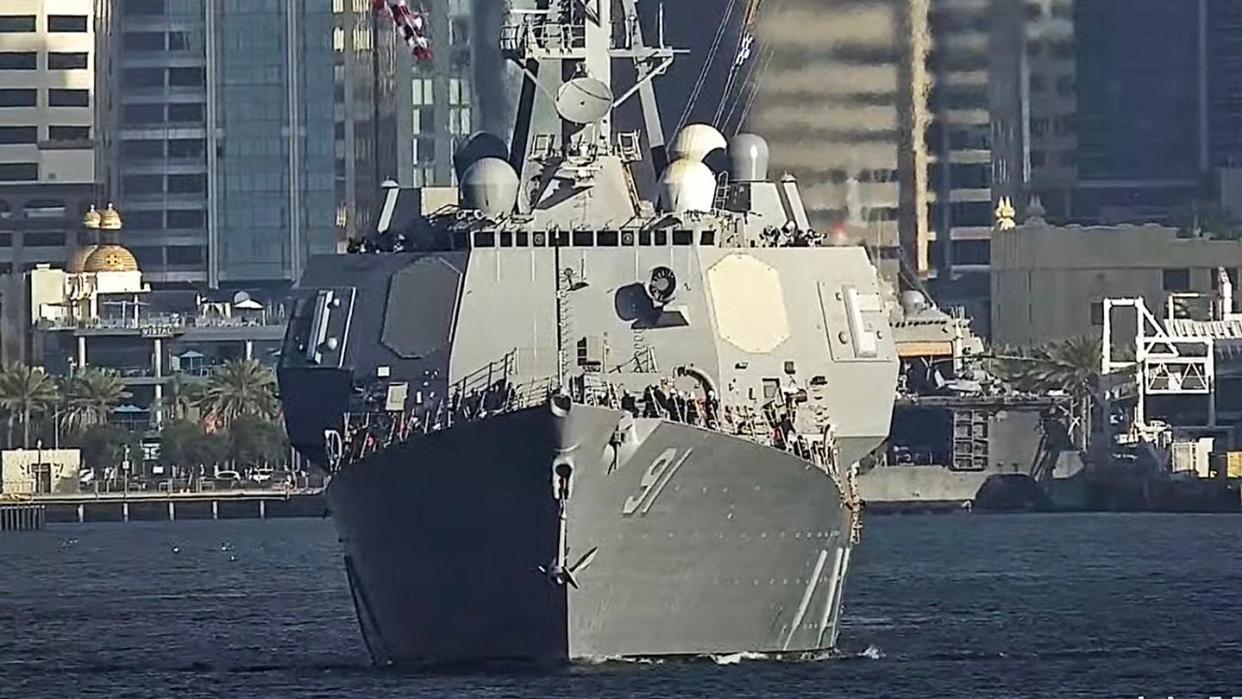
Thanks to a new set of photos, we’ve got our first full look at the U.S. Navy’s new Surface Electronic Warfare Improvement Program (SEWIP) Block III installation aboard a Arleigh Burke class destroyer. The radical upgrade leaves its host warship looking very different than prior to modification. It’s not for nothing that the configuration has already been dubbed ‘muffin top’ by some less-than-kind observers.
First off, it’s well worth checking out our two previous in-depth features on this topic, discussing the full scope of SEWIP III revolutionary capabilities and our previous look at the revisions to the superstructure, before looking at the entire installation in its completed state, and just how dramatic the changes it brings are.
https://www.twitter.com/WarshipCam/status/1722038589628858490?s=20
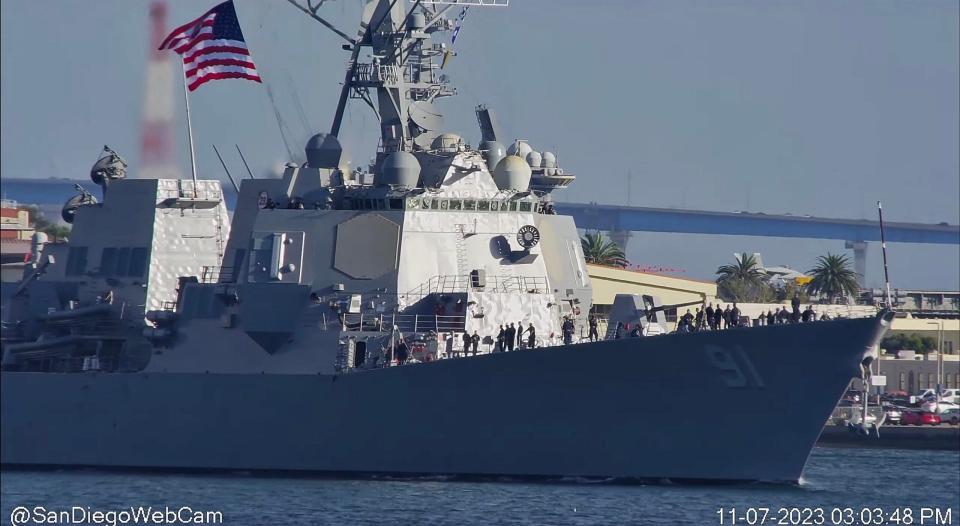

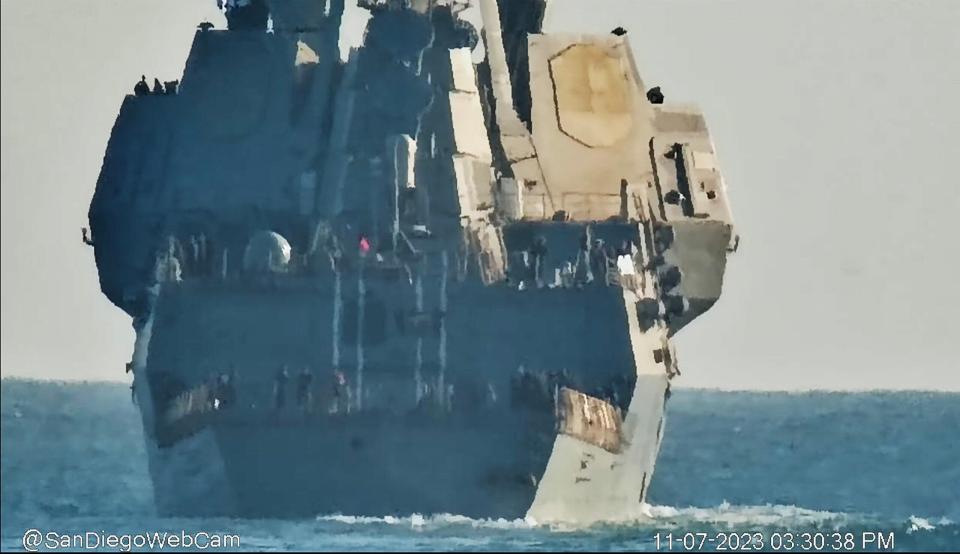
The photos in question depict the USS Pinckney (DDG-91), a Flight IIA subvariant, and the first of the Arleigh Burke class to receive SEWIP Block III. The vessel left San Diego yesterday after a two-year regularly scheduled maintenance period, which included the upgrade.
https://twitter.com/WarshipCam/status/1722066671664267573 https://twitter.com/CavasShips/status/1625762244893237248
While the contours of the warship are radically different, this is especially noticeable from the front and rear aspects. Here, the sides of the main superstructure are completely reworked, with two enormous, geometric, fully enclosed extensions having been added, replacing what were previously open platforms and attachment points.
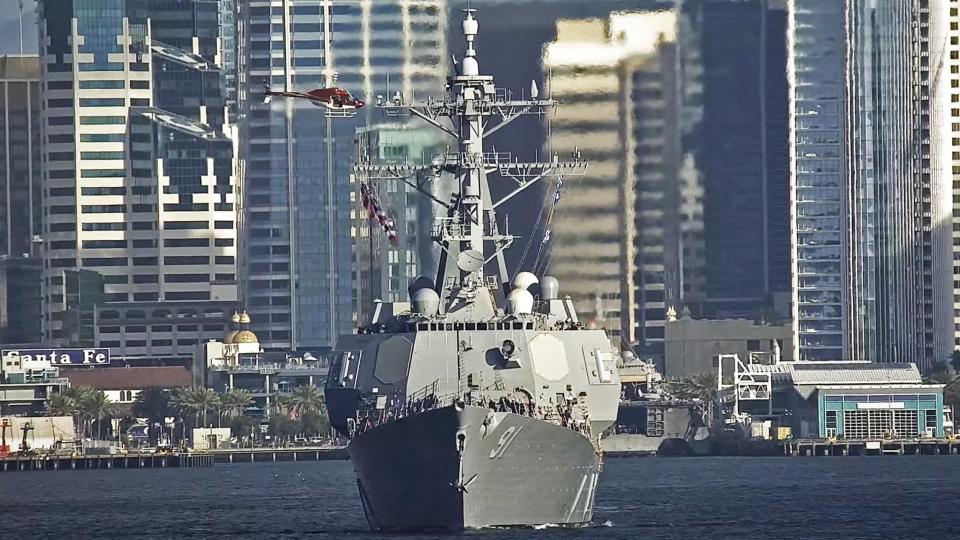
Previous photos of Pinckney were posted on the ship’s official Facebook page in September this year, while the warship was still yet to return to service. Nevertheless, they gave us a good preview of what the SEWIP Block III upgrade would look like once back at sea with the fleet.
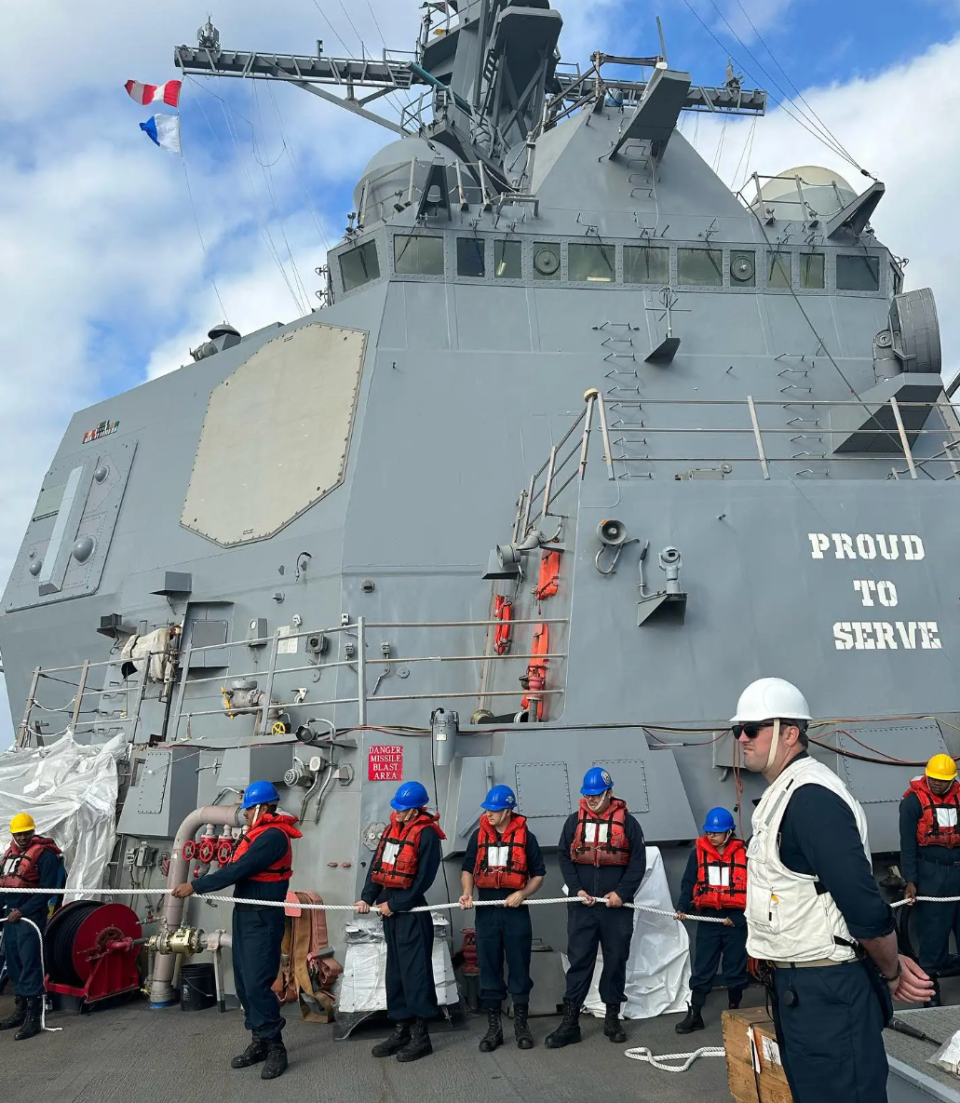
As to the SEWIP Block III, more formally designated AN/SLQ-32(V)7, this is nothing less than a revolutionary electronic warfare upgrade for the Arleigh Burke class.
Interestingly, the dramatic visual aspect of the SEWIP Block III upgrade is something that had been much less apparent in early concept art, although later renderings began to reveal more about the extent of the outward changes as a result of the four new arrays.
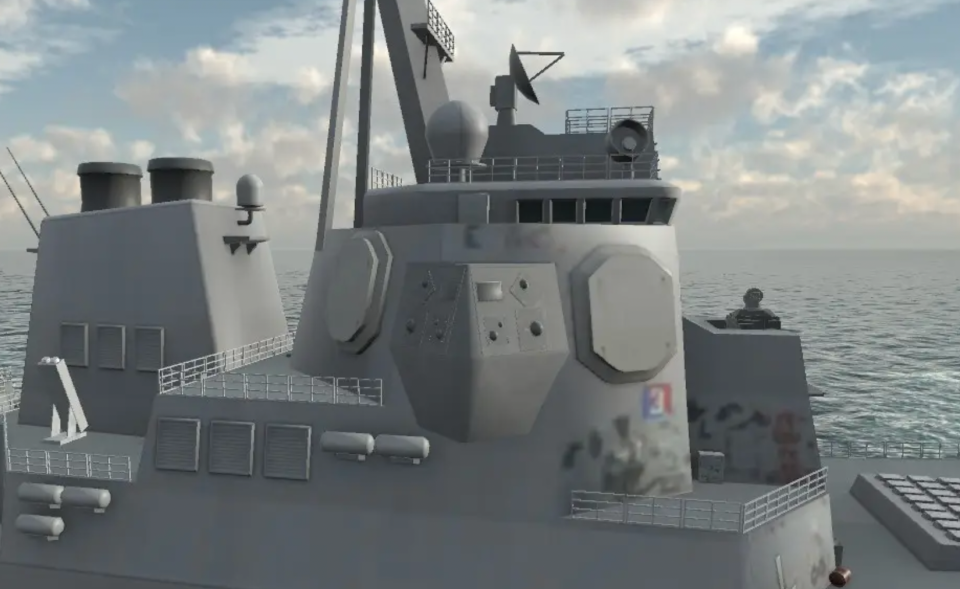
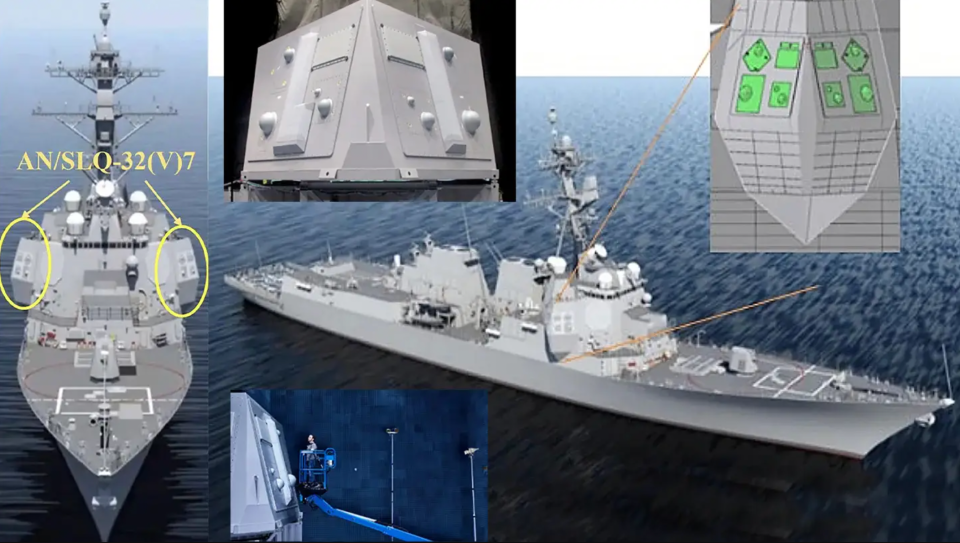
Previous generations of SEWIP systems have been in use on the Arleigh Burke class since it first entered the fleet three decades ago. Prior to this latest upgrade, the USS Pinckney also featured this earlier SEWIP equipment, distinguished by smaller enclosures mounted on external platforms on either side of the main superstructure below the bridge wings. This is standard across the class, with different SEWIP configurations existing on various ships, but all pale in comparison to SEWIP Block III.
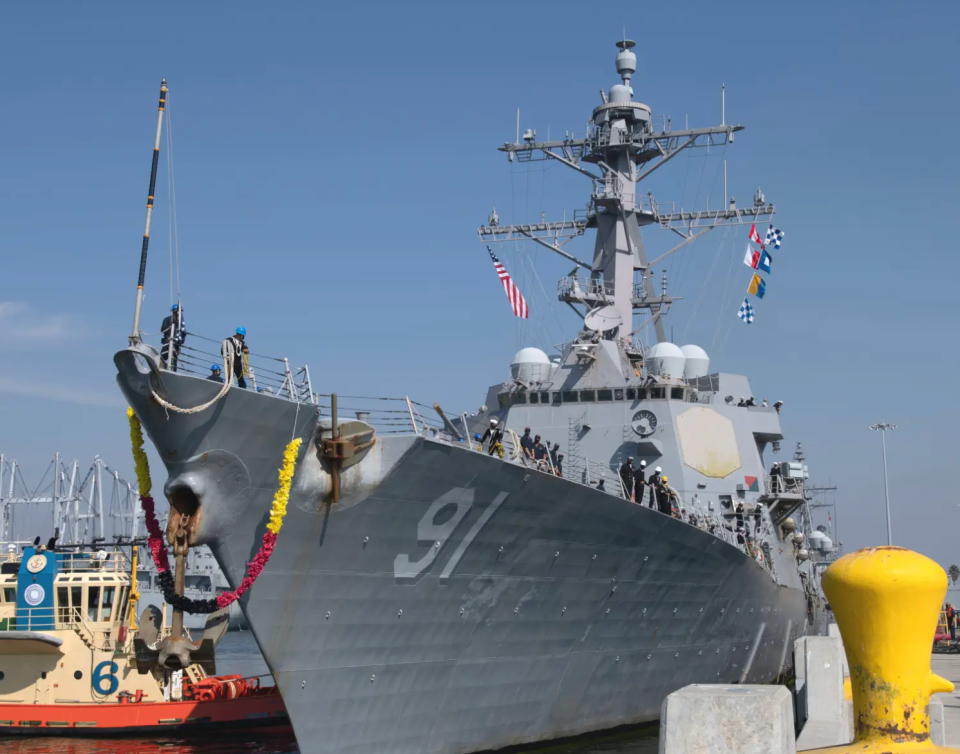
With SEWIP Block III, the same area of the superstructure is now enclosed, with a blended-in appearance that makes the ship look especially ‘top-heavy,’ with the new structure extending all the way down to the gunwale — the upper edge of the hull.
Not to forget, however, that behind the major cosmetic changes is a big advance in the capabilities of the Arleigh Burke class, based around active electronically scanned array (AESA) technology. To summarize, the new configuration combined the advanced passive detection capabilities that were already provided by earlier SEWIP iterations with an enhanced ability to make active electronic attacks — using powerful, and highly precise bursts of radio-frequency energy. This can also be brought to bear against multiple targets at once, especially important as concerns grow about massed maritime attacks by different vectors.
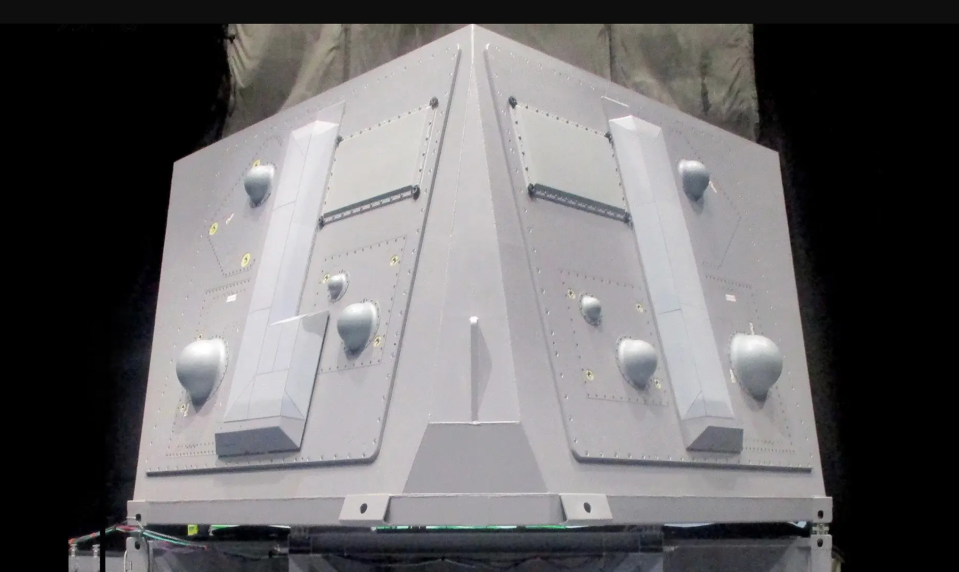
Beyond that electronic warfare functionality, SEWIP Block III can also be used for extreme situational awareness of everything going on in RF spectrum in the region around the ship. Its AESA technology also give it true multi-role capabilities. It can be used for long-range, high-bandwidth communications and even as a radar itself.
It is also designed to be able to be upgraded for decades to come, which helps explain the very obvious increase in terms of internal space that the modification brings.
For the Navy, the SEWIP Block III upgrade arrives at a time in which electronic warfare, in general, is in the ascendant, with the Arleigh Burke hulls, in particular, adding various new items of equipment.
The need for warships able to offer electronic attack and other functions is driven, to a significant degree, by the rapid proliferation of ever more advanced anti-ship cruise and ballistic missiles, not to mention drones that might attack from the air, in the water, or from below it, and potentially do so in great numbers. While these kinds of weapons were once the preserve of well-funded and well-established militaries, they can increasingly be found in the hands of even non-state entities, not to mention smaller armed forces.
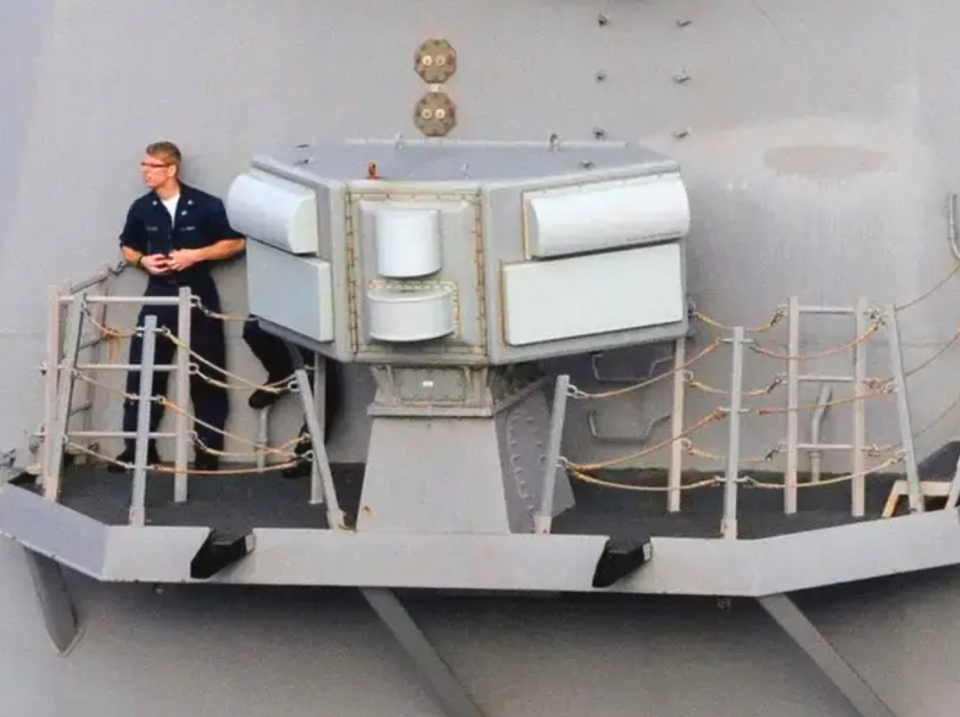
Then there is the threat of hostile actors with their own electronic warfare capabilities, which are fast catching up with those of the U.S. military, especially as regards near-peer adversaries like China and Russia.
As we have discussed in the past, SEWIP Block III or technologies spun off from it, could also end up on other vessels, too. There is already work being done on smaller ‘lite’ versions of the same equipment, which would be suitable for hulls without the space and power advantages offered by the Arleigh Burkes.
As of early this year, the Navy said it planned to outfit 20 Flight IIA Arleigh Burke class destroyers with SEWIP Block III.
The same warships are expected to add other advanced equipment as well, including new AN/SPY-6(V)4 radars, which you can read more about here.
There is also the question of how the latest Flight III Arleigh Burkes will be affected by the introduction of SEWIP Block III. USS Jack H. Lucas, the first example of the subclass, has prominent fixed-face arrays for its powerful AN/SPY-6(V)1 radar installed on its main superstructure, but no SEWIP Block III. It could add it in due course, or perhaps a variant of it.
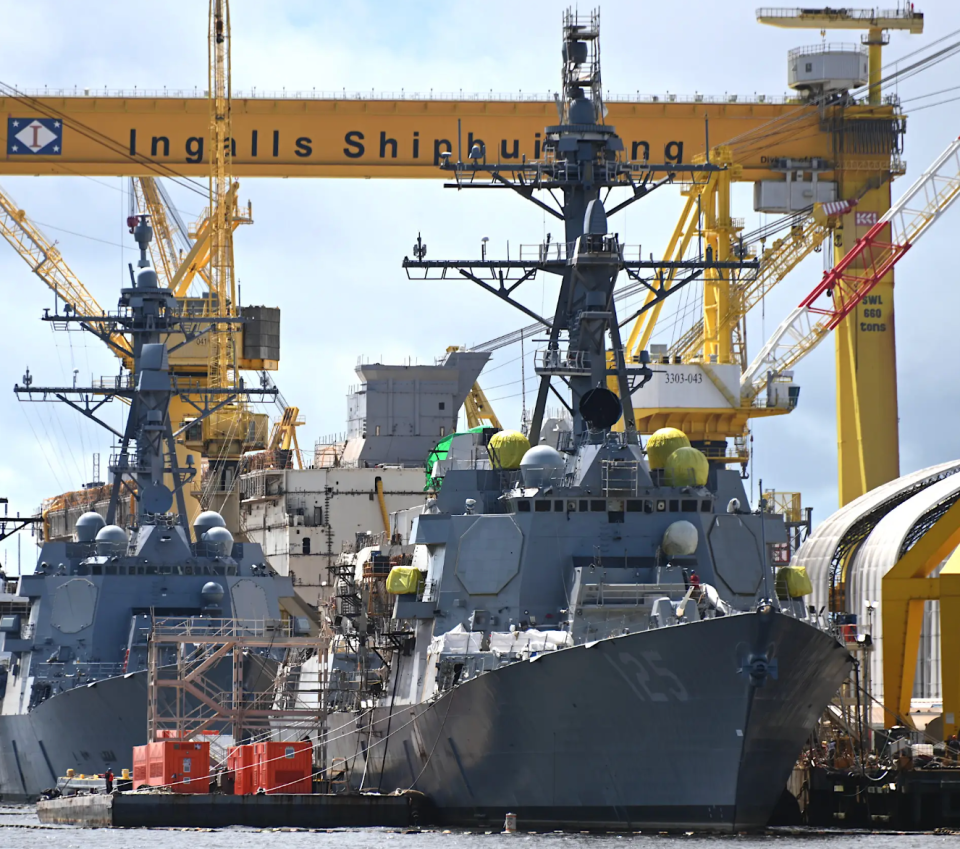
Overall, the new look totally transforms the original Arleigh Burke’s famously attractive form, with the latest photos of the USS Pinckney making it very obvious that the vessel has SEWIP Block III installed.
While the revised appearance will almost certainly attract more humorous nicknames and memes, the capabilities that it brings to the Navy are obviously very attractive indeed.
Contact the author: thomas@thedrive.com

